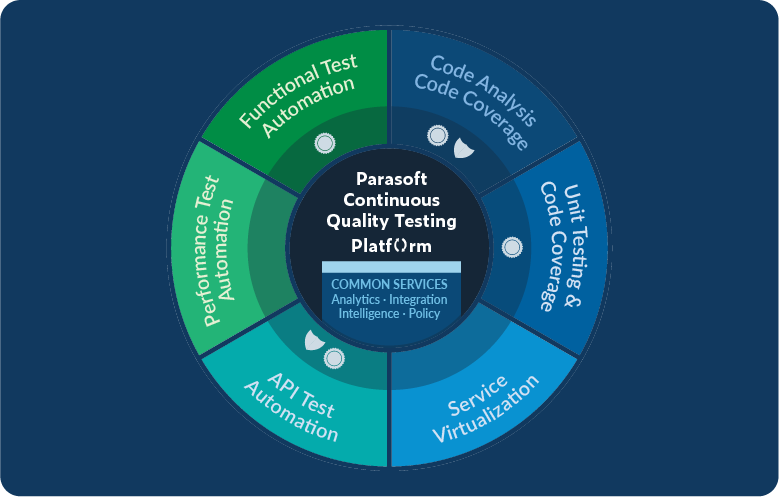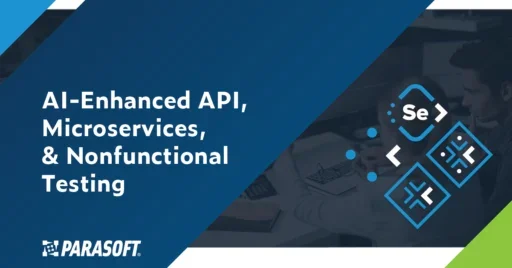Use Agentic AI to generate smarter API tests. In minutes. Learn how >>

End-to-End Testing Improves Software Quality
End-to-end testing is a testing methodology testers employ to test an application’s workflow from start to finish. The objective of end-to-end testing is to validate system integration and to make sure data is secure.
End-to-End Testing
What Is End-to-End (E2E) Testing?
End-to-end testing is a testing methodology testers employ to test an application’s workflow from start to finish. The objective of end-to-end testing is to validate system integration and to make sure data is secure.
With a focus on the user experience, testers replicate user scenarios to the best of their knowledge, ability, and expertise. They achieve success when the software application performs as expected, based on business requirements and customer expectations.
Testing end to end means that the tests involve the entire user interface experience within the application, carrying out each operation the system performs. This includes monitoring if:
- APIs respond to requests accurately.
- Data flows correctly in all possible circumstances.
- Error messages communicate appropriately when the application meets unexpected conditions.
The app testing process also tests every operation the application can execute. This reveals:
- How the app communicates with hardware, databases, and other apps.
- If it connects with the network properly.
- If the app’s external dependencies work predictably.
E2E testing design also validates data/batch processing from upstream and downstream systems. The test uses production-like information and test environments to duplicate real-time settings and situations.
Testers usually execute end-to-end software testing after they have performed system and functional testing.
The Benefits of End-to-End Testing
Increase Test Coverage
E2E type of testing performs testing of the application’s entire flow, including the different subsystems.
Detect and Remediate Flaws
The test checks for coding flaws so developers can catch errors and repair the code before it can cause problems.
Validate Operation System Wide
E2E-based testing comprehensively tests the application across various endpoints for different platforms and devices.
Identify Performance Issues
End-to-end testing techniques reveal whether the entire application is working as efficiently as it should. For example, testers create a complete end-user workflow in a browser, using real testing data, to monitor the performance under typical and heavy load conditions.
Improve User Experience
The coding may be correct but unanticipated real user actions may cause problems. An E2E testing platform makes sure all sections of the app communicate and work well with each other, and that they respond appropriately when strange inputs occur.
Gain Delivery Confidence
From a user standpoint, testers test function and performance at each layer and sprint. This increases confidence in the application before developers release it. It also reduces risk for the future.
Types of End-to-End Tests
Horizontal
This test is more commonly used. With horizontal testing, testers test from a user perspective by determining if the user can navigate the software and use functions as required. The test also allows testers to detect bugs and exceptions that prevent users from using the software’s various functions. An example is an e-commerce web app. Testers test to see if the user can sign up or log in to their profile, search, add items to their cart, enter data securely, confirm their purchase, and log out.
Vertical
Testers employ vertical E2E tests when testing critical parts of a complex system that do not involve interfaces or users. Testers test in levels or layers: integration, data, business, and presentation layers.
They conduct the test in either a sequential or hierarchical order. Testers vertically E2E test if the system is highly technical or has no user input. An example of vertical end-to-end testing is testing an API.
Testers Must Include Three Types of Activities When E2E Testing
1. User functions
When building user functions, testers must:
- Note the software’s features and the interconnected subsystems.
- Track then record all actions for each function and for all input and output data.
- Identify the relationships between user functions.
- Determine whether every user function is either independent or reusable.
2. Conditions
In order to build conditions based on user functions, testers establish a set of specifications for each one. This may include data integrity requirements, timing, or any other elements that could affect the functions.
3. Test cases
When constructing test cases for end-to-end testing, testers need to:
- Build multiple test cases that test every capability of all user functions.
- Assign at least one individual test case to each condition.
Top 5 End-to-End Testing Best Practices
To perform E2E testing most effectively, we recommend a testing strategy and several best practices to help you with test case preparation.
- Early in the software development life cycle, understand the business and user requirements.
- Document the expected behavior from the user’s perspective.
- Deploy a test environment that meets the requirements.
- List the testing methods and parameters needed to test those requirements.
- Create suitable test cases.
Once you have everything defined, you can begin implementing test execution, then review the results and determine the steps to address any issues you identified.
Examples & Getting Started
End-to-End Testing Examples
You can test registering as a user on a website, using a feature, or paying for a service or product.
To test any one of these end-to-end, follow these steps.
- Create a workflow.
- Create test environments (use virtual/synthetic as needed).
- Generate test data (use virtual/synthetic as needed).
- Measure your test progress to determine success.
A Testing Guide to Get Started
Your goal is to test the complete workflow from the customer’s perspective, validate the various interfaces, and ensure the flow of information between the various system components all work as expected.
Here are some basic steps that testers use to realize successful end-to-end testing.
- Examine the requirements. Study the application to obtain a clear vision of how it is supposed to work in every detail.
- Develop a test environment in sync with all program requirements.
- Note hardware and software requirements.
- Record how every system component is supposed to respond.
- Develop an inventory of testing approaches to responses, including clear standards such as language and testing tools that the tester needs to adhere to for each test.
- Create test cases.
- Run the tests.
- After test completion and debugging, analyze the metrics and save them for possible future use.
Read how Cox Automotive drove down defects with end-to-end testing.
How Parasoft Helps
The Parasoft Continuous Quality Testing Platform enables teams to implement end-to-end testing framework within a CI/CD pipeline as part of a DevOp’s workflow. Parasoft provides the type of test automation tools teams need to move faster and focus on the code and activities that matter.
Parasoft was built for testing automation, so testers can run even the most complex unit testing, API testing, UI testing, or end-to-end testing case with a simplified command-line execution or programmatically via an open API call.
With Parasoft’s integrated service virtualization and environment management features, testers can deploy lightweight virtual services that behave exactly like the real systems in the environment. This creates a predictable test environment that is ready when you are. It also enables the creation of tests or test suites that focus only on the application changes that are important for your team.

Frequently Asked Questions
Related Resources

Elevate your software testing with Parasoft solutions.


